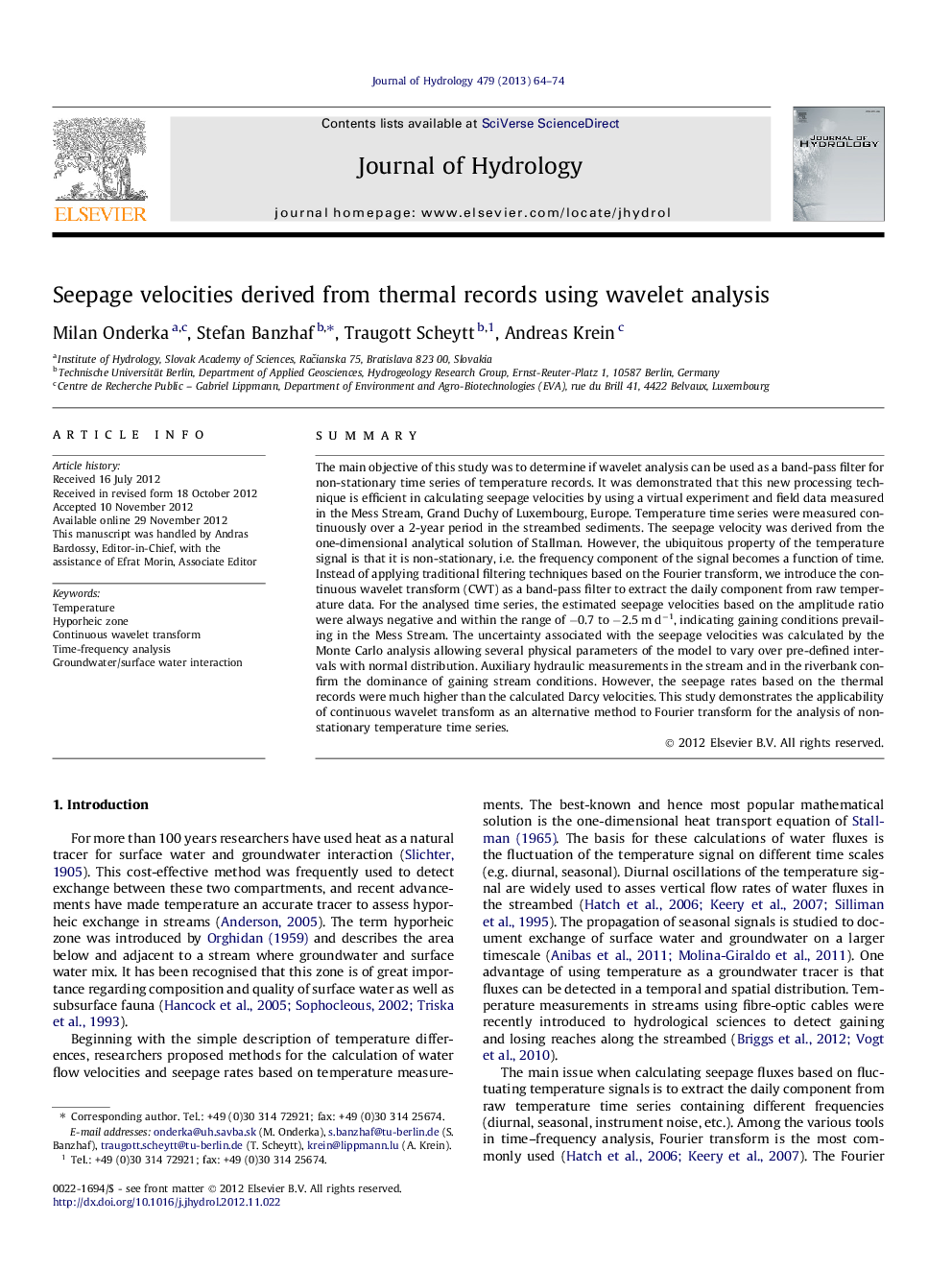| کد مقاله | کد نشریه | سال انتشار | مقاله انگلیسی | نسخه تمام متن |
|---|---|---|---|---|
| 4576549 | 1629969 | 2013 | 11 صفحه PDF | دانلود رایگان |

SummaryThe main objective of this study was to determine if wavelet analysis can be used as a band-pass filter for non-stationary time series of temperature records. It was demonstrated that this new processing technique is efficient in calculating seepage velocities by using a virtual experiment and field data measured in the Mess Stream, Grand Duchy of Luxembourg, Europe. Temperature time series were measured continuously over a 2-year period in the streambed sediments. The seepage velocity was derived from the one-dimensional analytical solution of Stallman. However, the ubiquitous property of the temperature signal is that it is non-stationary, i.e. the frequency component of the signal becomes a function of time. Instead of applying traditional filtering techniques based on the Fourier transform, we introduce the continuous wavelet transform (CWT) as a band-pass filter to extract the daily component from raw temperature data. For the analysed time series, the estimated seepage velocities based on the amplitude ratio were always negative and within the range of −0.7 to −2.5 m d−1, indicating gaining conditions prevailing in the Mess Stream. The uncertainty associated with the seepage velocities was calculated by the Monte Carlo analysis allowing several physical parameters of the model to vary over pre-defined intervals with normal distribution. Auxiliary hydraulic measurements in the stream and in the riverbank confirm the dominance of gaining stream conditions. However, the seepage rates based on the thermal records were much higher than the calculated Darcy velocities. This study demonstrates the applicability of continuous wavelet transform as an alternative method to Fourier transform for the analysis of non-stationary temperature time series.
► Wavelet analysis is introduced as an appropriate alternative to Fourier transform.
► Diurnal signals were successfully extracted from non-stationary records.
► Seepage rates can be derived from thermal records using wavelet analysis.
► Temperature based seepage rates indicate gaining stream conditions.
► Seepage rates are high (up to 2.5 m d−1) although silty sediments are found.
Journal: Journal of Hydrology - Volume 479, 4 February 2013, Pages 64–74